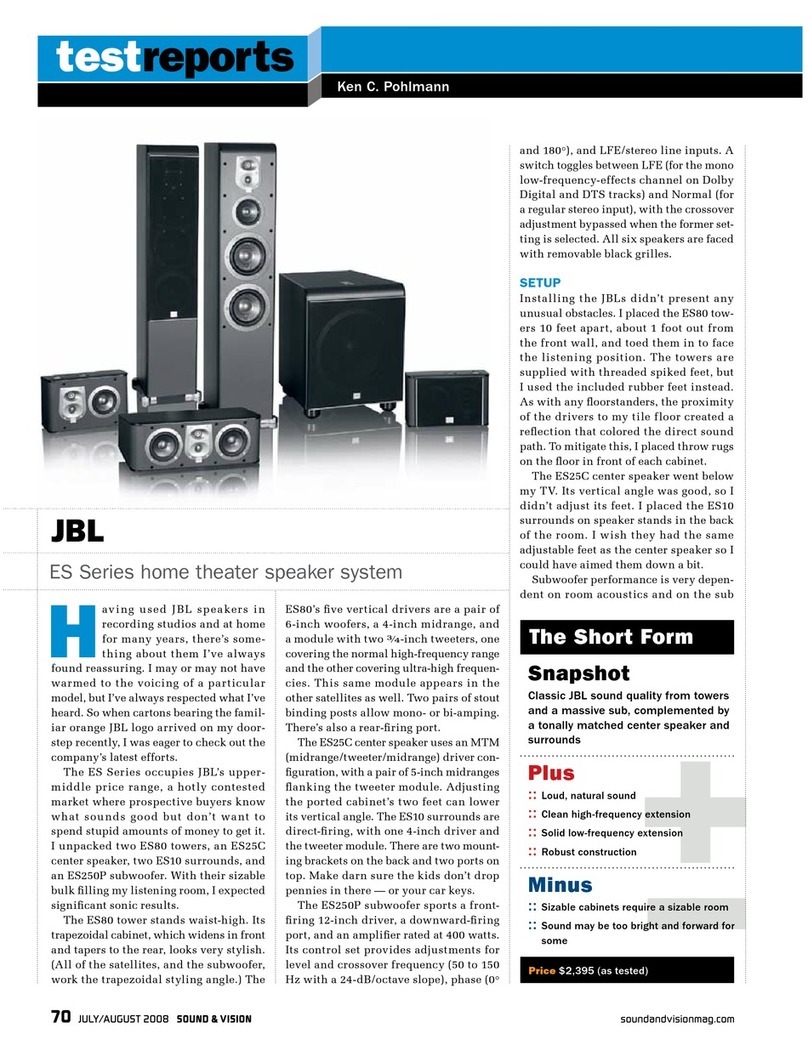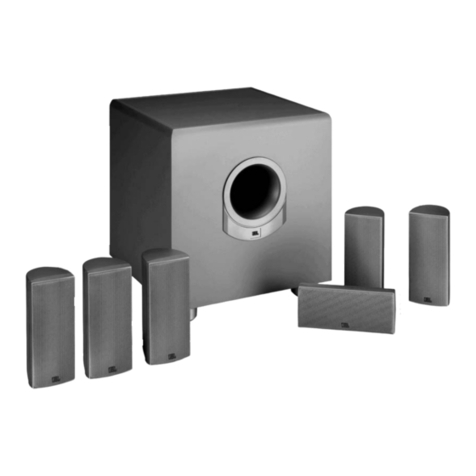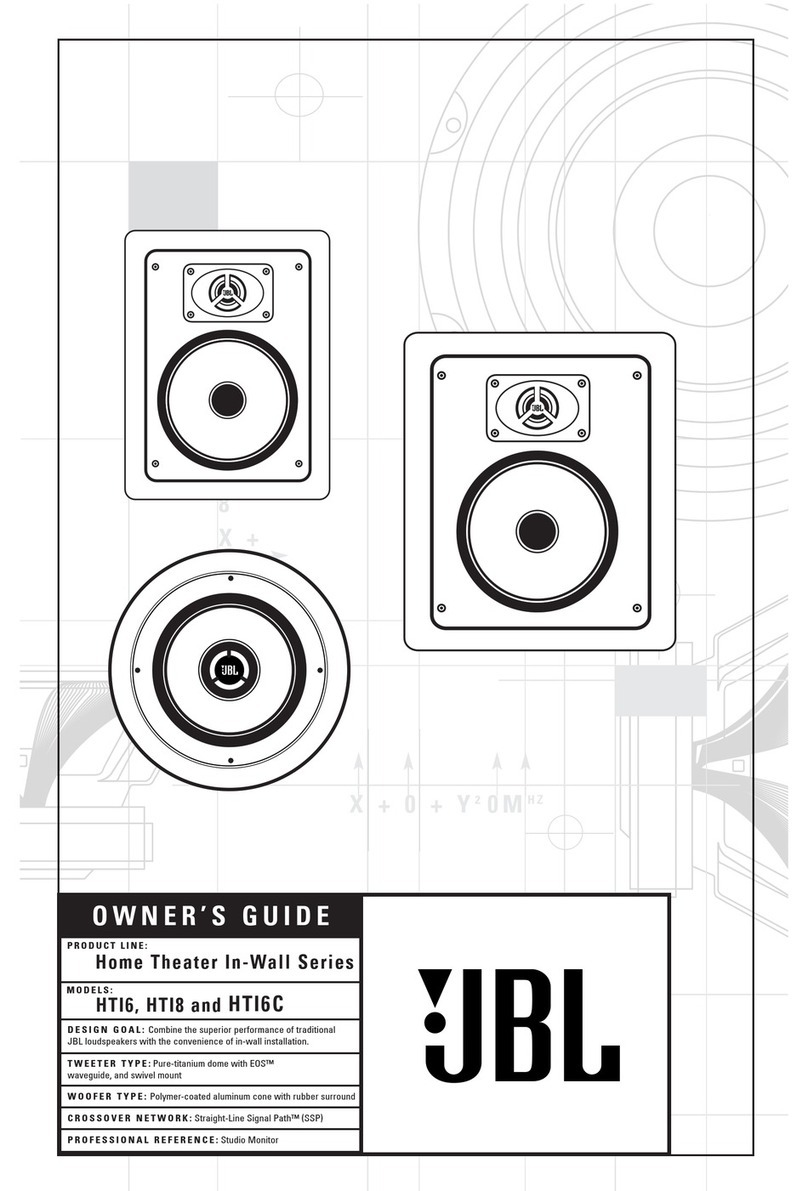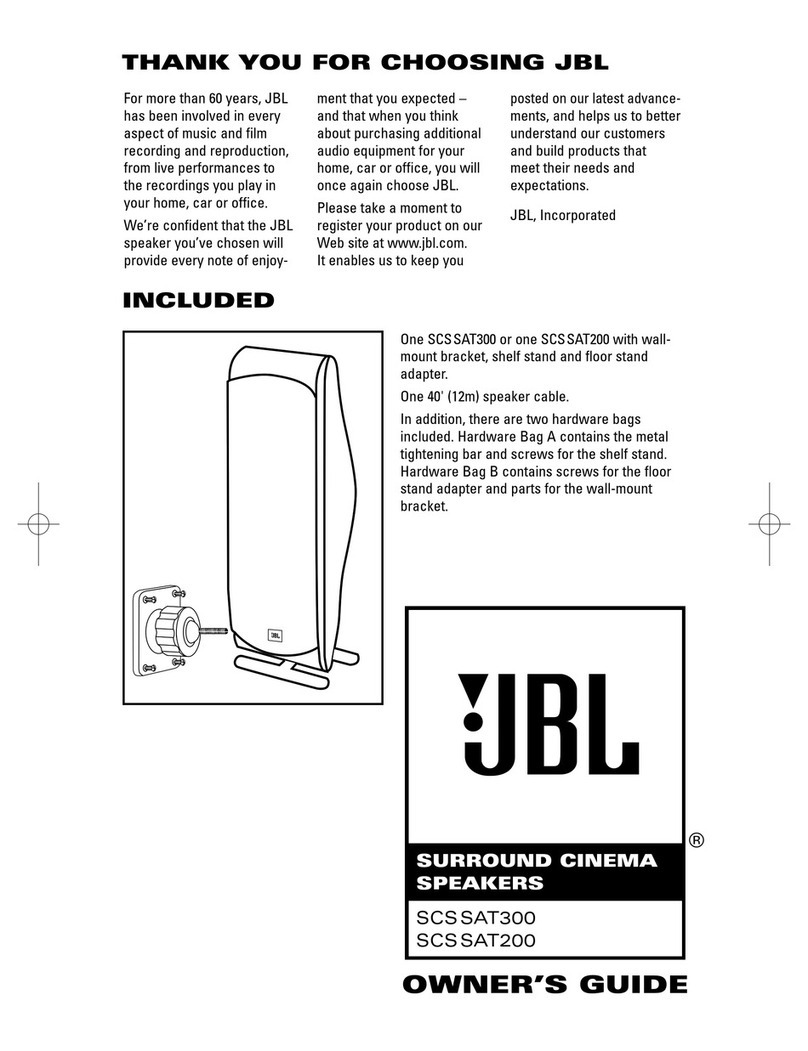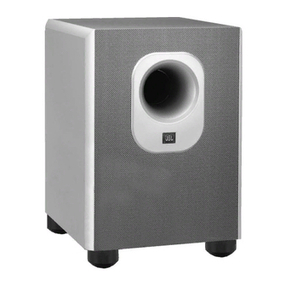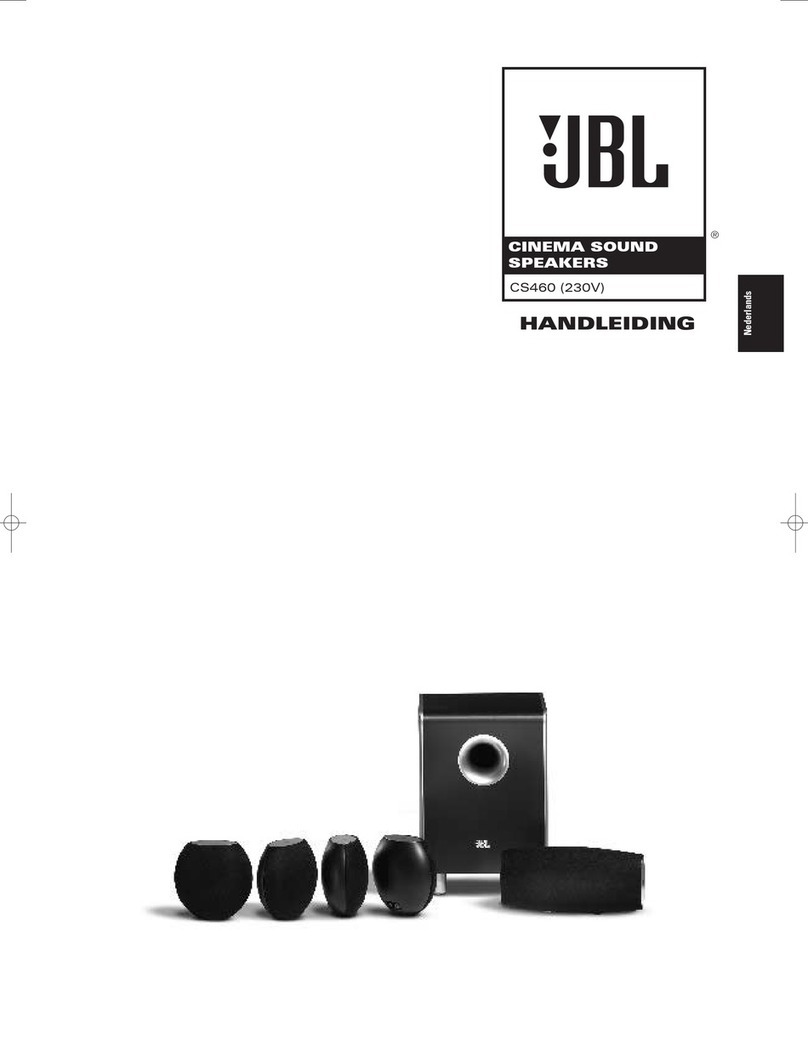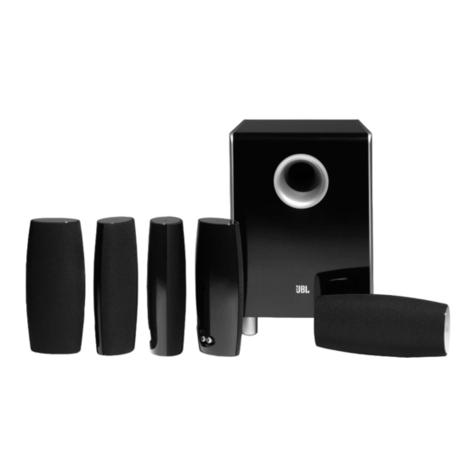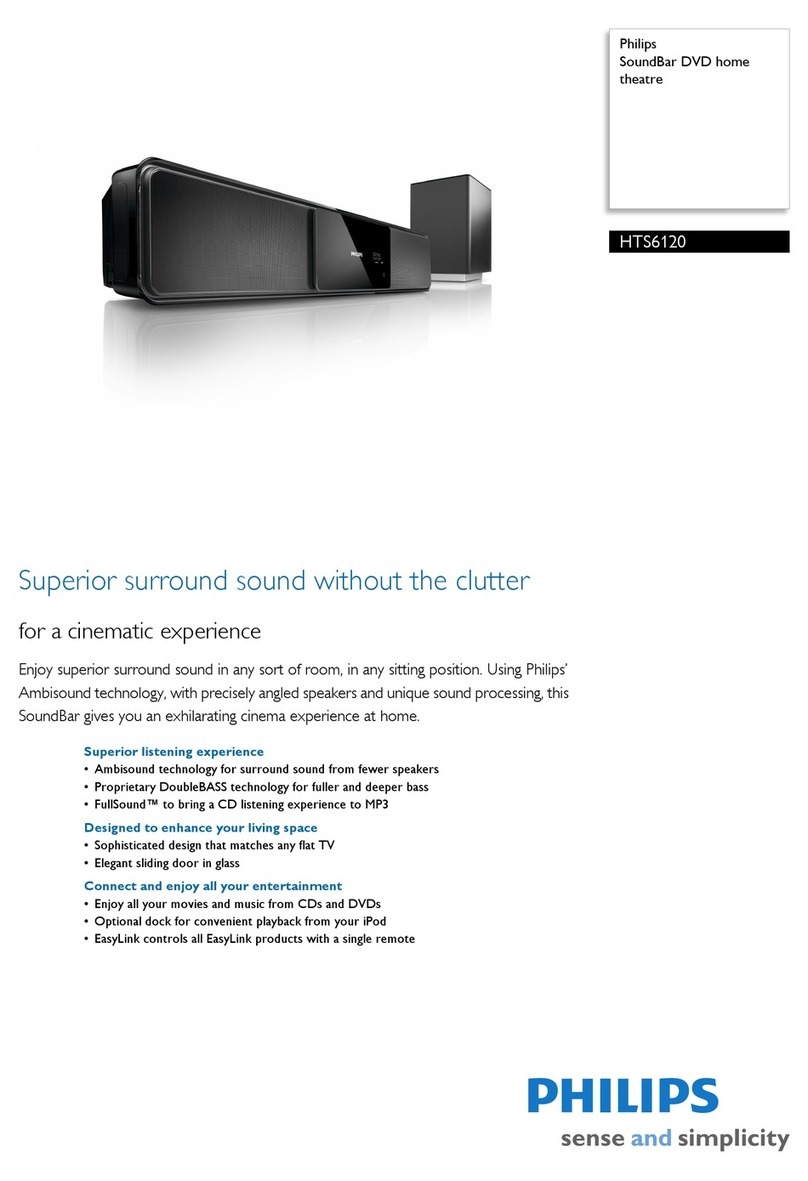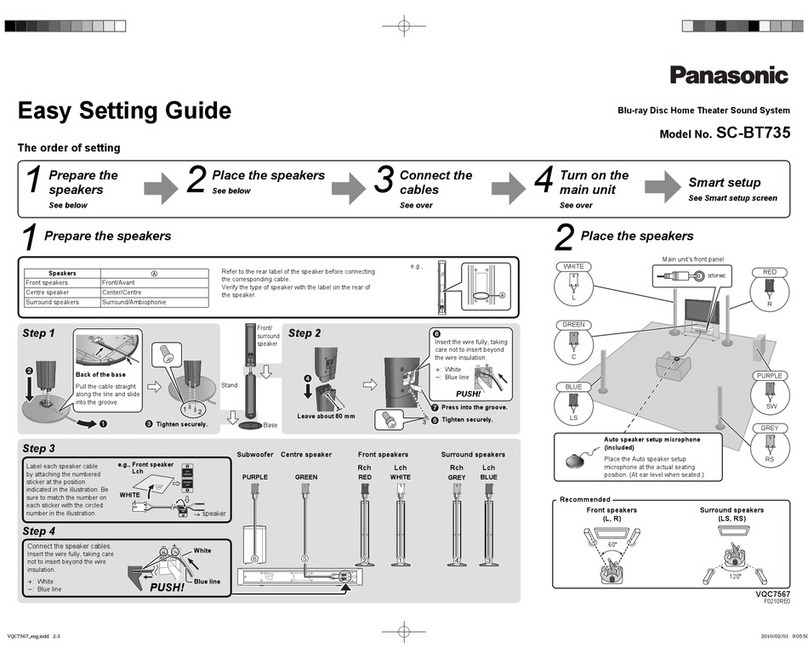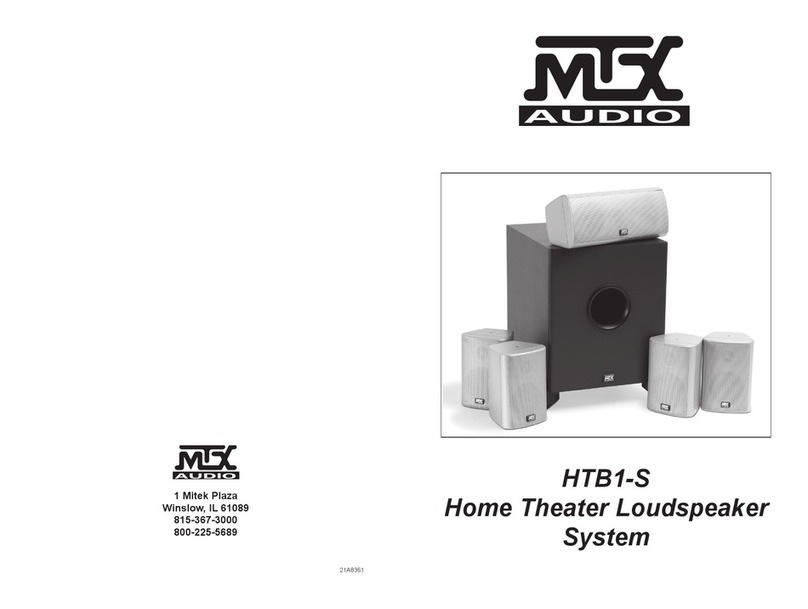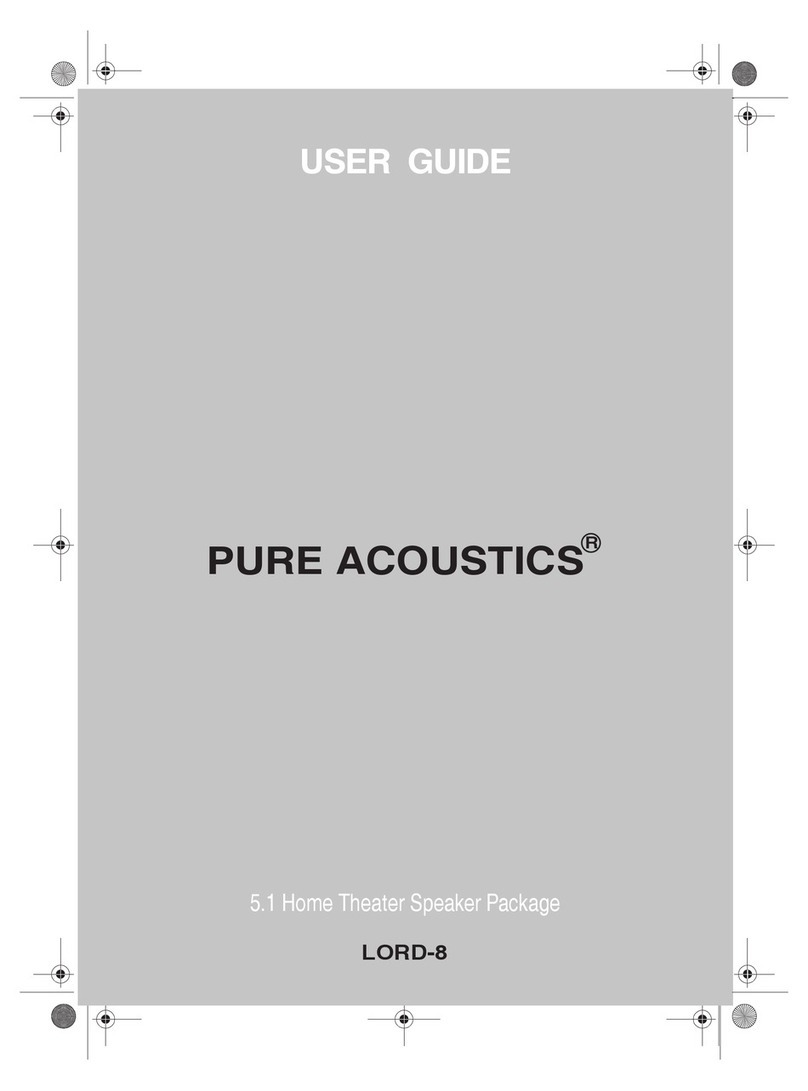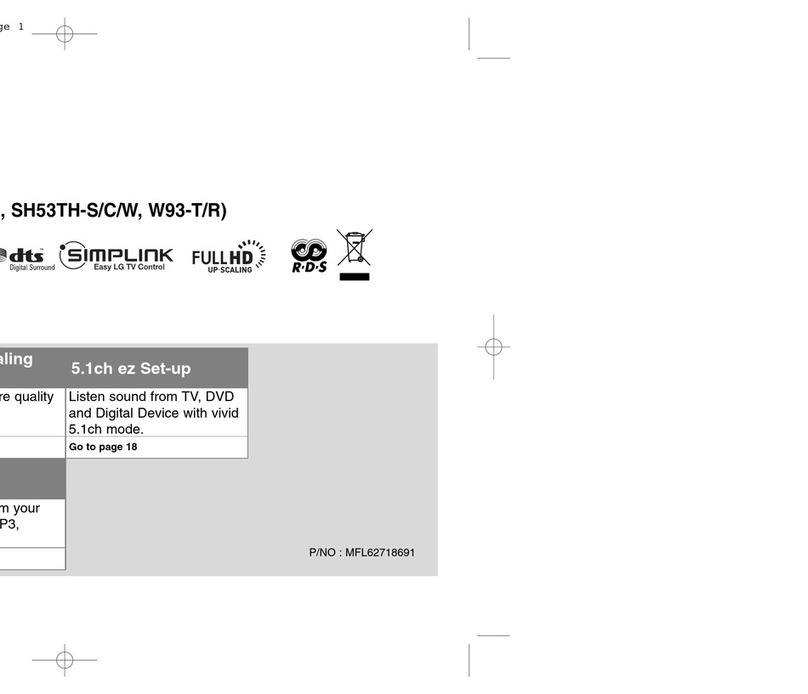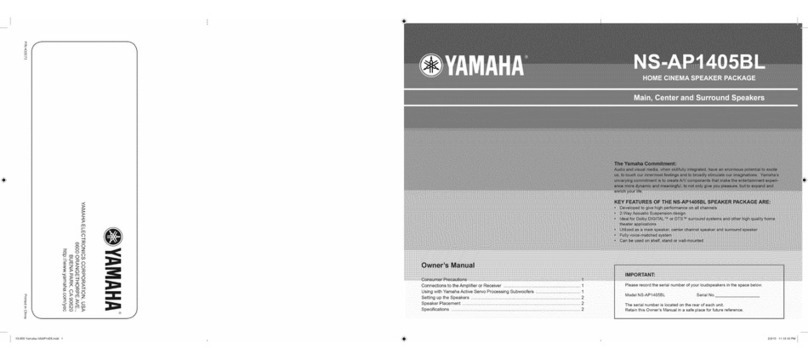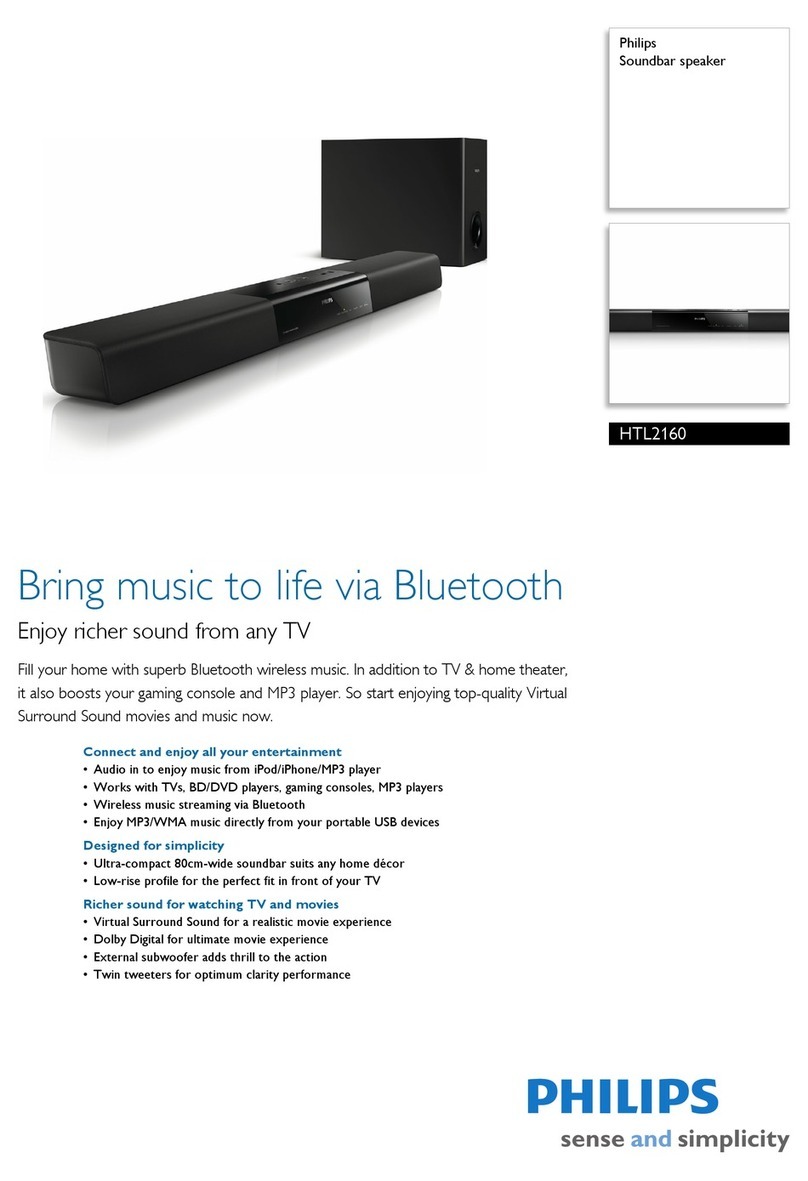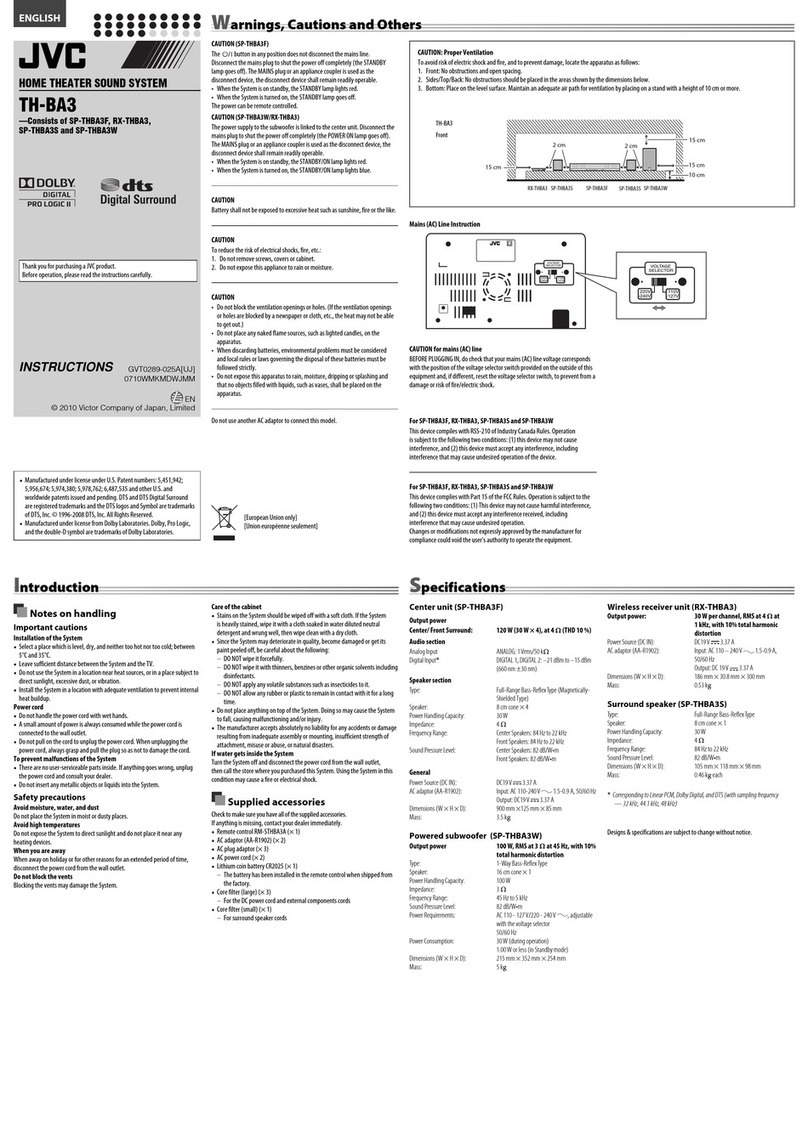2
READ THIS! Important Safety Precautions!
General:
1. Unpacking: Check the product carefully.
If it has been damaged in transit, report the
damage immediately by calling your dealer
and/or the shipping company that
delivered it.
2. Connections: Whenever changing, con-
necting or disconnecting signal or power
cables etc., always turn off all equipment.
This prevents transients from entering the
equipment and prevents electrical energy
from reaching you. Keep all connections
out of the reach of children. Before moving
the unit, be certain to disconnect any
interconnection cords with other
components, and make certain that you
disconnect any powered units from the AC
outlet.
3. Read Instructions. All the safety and
operating instructions should be read
before the product is operated.
4. Retain Instructions. The safety and ope-
rating instructions should be retained for
future reference.
5. Heed Warnings. All warnings on the pro-
duct and in the operating instructions
should be adhered to.
6. Follow Instructions. All operating and
use instructions should be followed.
7. Water and Moisture. The product should
not be used near water – for example, near
a bathtub, washbowl, kitchen sink, laundry
tub, in a wet basement, or near a
swimming pool, and the like.
8. Accessories. To ensure proper operation
and to avoid the potential for safety
hazards, place the unit on a firm and level
surface. When placing the unit on a shelf,
be certain that the shelf and any mounting
hardware can support the product’s
weight. Do not place this product on an
unstable cart, stand, tripod, bracket, or
table. The product may fall, causing
serious injury to a child or adult, and
serious damage to the product. Use only
with a cart, stand, tripod, bracket, or table
recommended by the manufacturer, or sold
with the product. Any mounting of the
product should follow the manufacturer’s
instructions, and should use a mounting
accessory recommended by the
manufacturer.
9. Wall or Ceiling Mounting. The product
should be mounted on a wall or ceiling only
when and as recommended by the manu-
facturer.
10. Cleaning. Unplug this product from the
wall outlet before cleaning. Do not use
liquid cleaners or aerosol cleaners. Use a
damp cloth for cleaning.
11. Attachments. Do not use attachments
not recommended by the product
manufacturer, as they may cause hazards.
12. Replacement Parts. When replacement
parts are required, be sure the service
technician has used replacement parts
specified by the manufacturer or that have
the same characteristics as the original
part. Unauthorized substitutions may result
in fire, electric shock or other hazards.
13. Safety Check. Upon completion of any
service or repairs to this product, ask the
service technician to perform safety
checks to determine that the product is in
proper operating condition.
14. Feet/Spikes. When positioning, or
moving this product ensure that is lifted
rather than dragged across any
floor/mounting surface. This will avoid any
damage to the floor/mounting surface.
Attention! Products and/or product feet
constructed of rubber or plastics may, in
seldom cases, react chemically and
discolor treated or non-treated wooden
surfaces if positioned without protection.
15. Warranty: The following conditions may
result in a void product warranty:
a. the manufacturers serial number is
removed or forged.
b. if repairs and/or modifications and/or
other treatments/tunings have been
carried out by non-authorized personnel
or accessories/supplements are
attached, which are not approved by
manufacturer/importer.
16. Warranty: The following items are not
covered by the product warranty:
a. Damage caused by inappropriate
handling despite clear instructions
provided in the owners manual.
b. Damage to mechanical parts (such as
record-/playback heads, moving rubber
and plastic parts and fuses) as well as
results of normal wear and tear.
c. Damage caused by external action or
influence.
d. Damage caused by miss-use by user.
e. Damage caused by excessive electrical
mains supply voltage or lightning strike.
f. Damage caused by fire, water or smoke.
g. Damage known to buyer prior to
purchase.
h. Damage caused by professional employ-
ment of home entertainment products
(e.g. for catering trade, restaurants,
public address or infinite loop
announcement use etc.)
17. Specifications: All product specifica-
tions/features are subject to change
without notification.
Passive Products:
18. Amplifiers: Amplifiers used to drive
these units must deliver a sufficient output
power. A lack of output power may lead to
amplifier-clipping, which causes damage
not covered by guarantee.
Active (Powered) Products:
19. Ventilation. Slots and openings in the
cabinet are provided for ventilation and to
ensure reliable operation of the product
and to protect it from overheating, and
these openings must not be blocked or
covered. The openings should never be
blocked by placing the product on a bed,
sofa, rug, or other similar surface. This
product should not be placed in a built-in
installation such as a bookcase or rack
unless proper ventilation is provided or the
manufacturer’s instructions have been
adhered to.
Make certain that the proper space (more
than 10cm) is provided both above and
below the unit for ventilation. If the
amplifier will be installed in a cabinet or
other enclosed area, make certain that
there is sufficient air movement within the
cabinet, with means provided for hot air to
exit and for cool air to be brought in.
Do not obstruct the ventilation slots on the
top of the unit or place objects directly
over them. Remember, power amplifiers
generate heat, and the heatsink fins and
ventilation slots that form part of the
cabinet are specially designed to remove
this heat. Placing other electronic
equipment near these heat-dissipation
systems may possibly affect the long term
reliability of both your amplifier and the
objects placed above it.
Do not place CDs, record jackets, owner’s
manuals or other paper on top of or
beneath the unit or in between products
containing amplifiers in a stack. This will
block the air flow, causing degraded
performance and a possible fire hazard.
20. Power Sources. This product should be
operated only from the type of power
source indicated on the marking label. If
you are not sure of the type of power
supply to your home, consult your product
dealer or local power company. For
products intended to operate from battery
power, or other sources, refer to the
operating instructions.
21. Grounding or Polarization. This product
may be equipped with a polarized
alternating-current line plug (a plug having
one blade wider than the other). This plug
will fit into the power outlet only one way.
This is a safety feature. If you are unable to
insert the plug fully into the outlet, try
reversing the plug. If the plug should still
fail to fit, contact your electrician to replace
your obsolete outlet.
Do not defeat the safety purpose of the
polarized plug.
22. Power-Cord Protection. Power-supply
cords should be routed so that they are not
likely to be walked on or pinched by items
placed upon or against them, paying parti-
cular attention to cords at plugs, con-
venience receptacles, and the point where
they exit from the product. To avoid safety
hazards, use only the power cord supplied
with your unit. If a replacement cord is
used, make certain that it is of a similar
gauge. We do not recommend using
extension cords with this product. As with
all electrical devices, do not run power
cords under rugs or carpets or place heavy
objects on power cords. Damaged power
cords should be replaced immediately, by a
qualified service technician, with cords
meeting factory specifications. When
disconnecting the power cord from an AC
outlet, always pull the plug; never pull the
cord.

